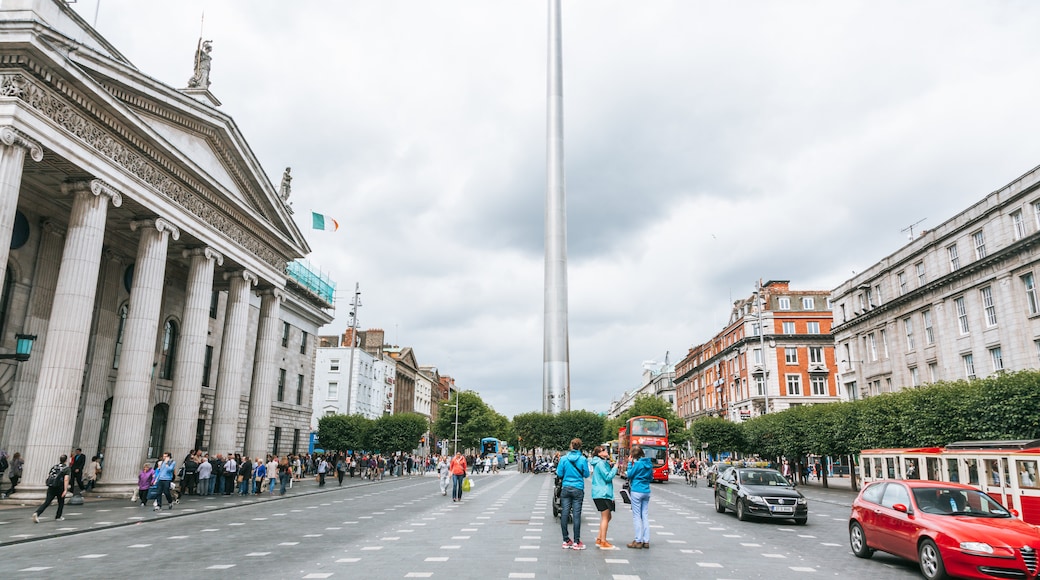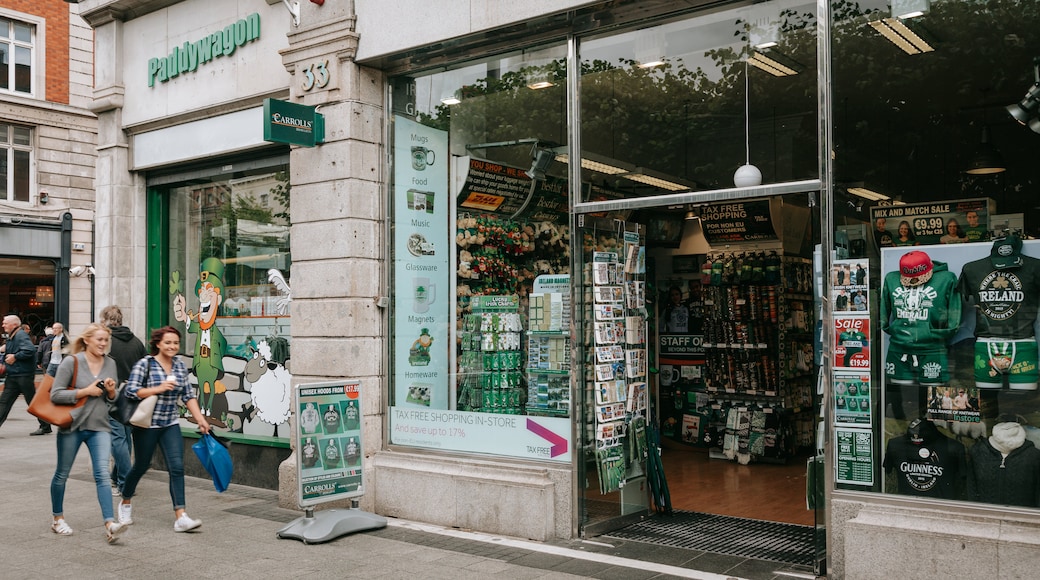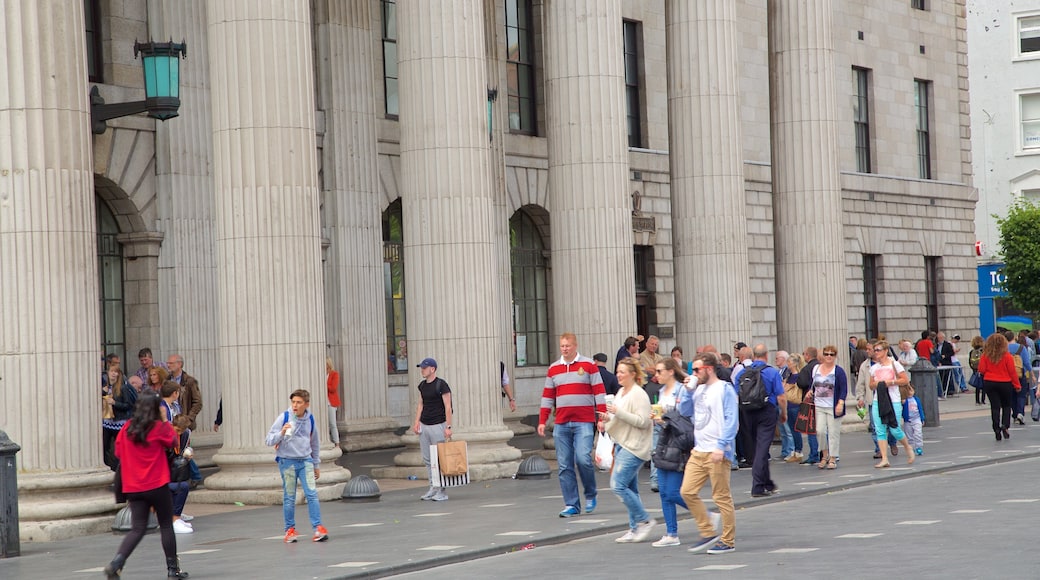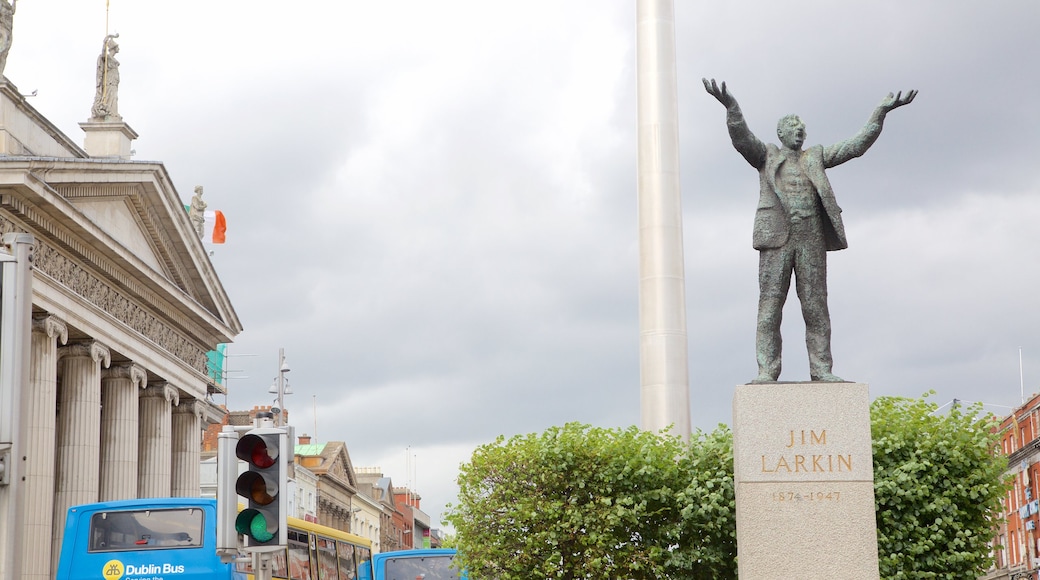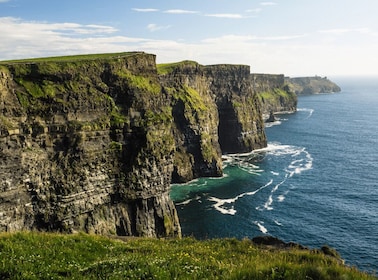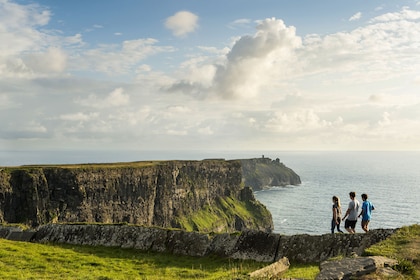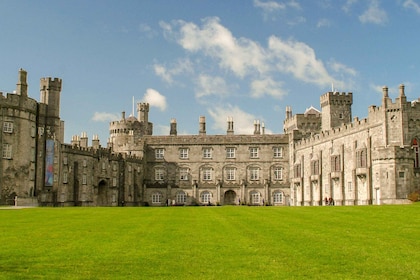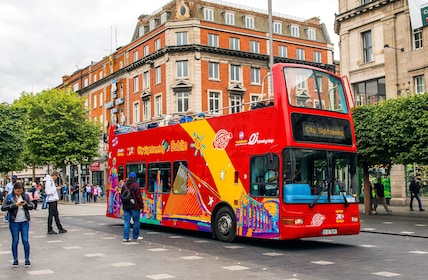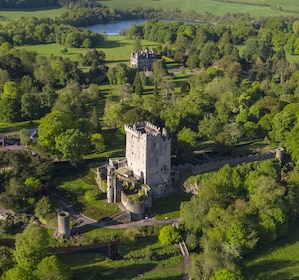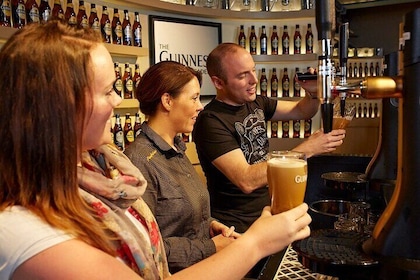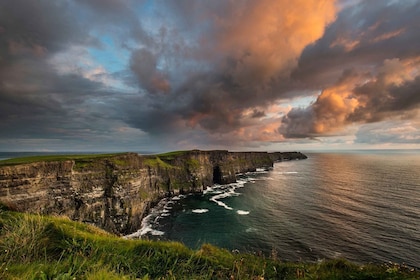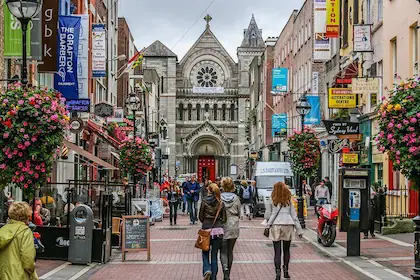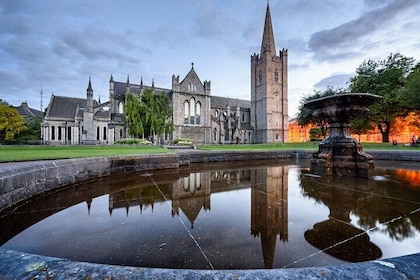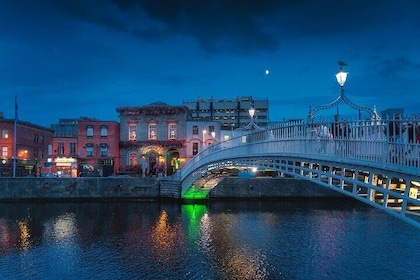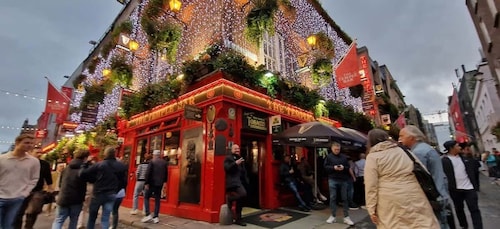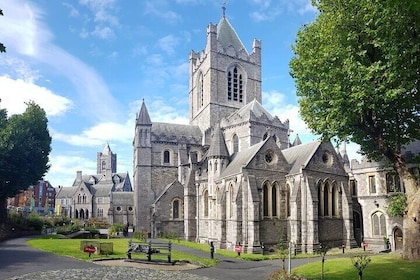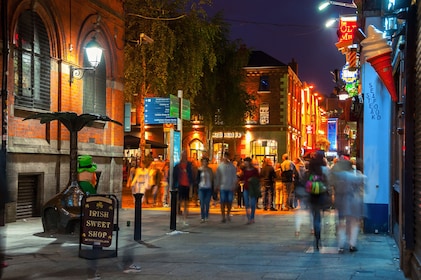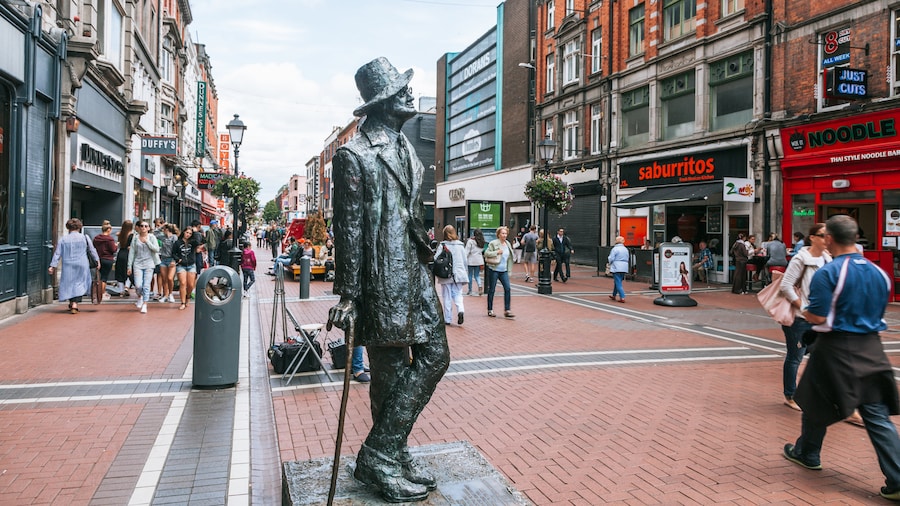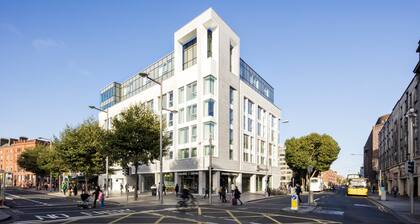O’Connell Street is among Dublin’s busiest and recognizable parts. It consists of a wide boulevard divided by spaces for trees and works of art. Admire the many historic buildings and peruse the upscale boutiques that line this busy street.
Among the most interesting structures is the General Post Office. Note its Greek-revival design with imposing columns and a large pediment. Hear how the building was home to leaders of the Easter Rising in the early 1900s, before most of it burned down.
In the center of the boulevard is the Spire of Dublin, which many claim is the world’s tallest public sculpture. Look at your distorted reflection in the wide stainless steel base. Gaze up at the tip of the spike, which reaches a height of 400 feet (120 meters). See the artwork at night, when its base and tip are illuminated. From the spire, spot the James Joyce Statue, which depicts the Irish writer with one hand in a pocket and the other leaning on a cane.
Find out about the origins of the boulevard, which was known as Drogheda Street in the 17th century. It later played a major role in momentous occasions, such as the Dublin Lockout, the Irish Civil War and the destruction of the Nelson’s Pillar by the Irish Republican Army.
The street, which has several car lanes and large sidewalks, is more than 150 feet (45 meters) across. Reach the O’Connell Bridge at the southern end of the street. Learn about its rich past, dating back to 1794. Its three semi-elliptical arches glow green at night. Discover the hoax tribute to Father Pat Noise that was attached to the stonework by pranksters.
Admire the O’Connell Monument to 19th-century nationalist leader Daniel O’Connell, after whom the bridge and street were named. He campaigned for Catholic rights.
O’Connell Street leads north from the north bank of the River Liffey. It lies in the heart of the city and is considered the most central point. Ride a bus to one of the many stops along the street, which leads to the Gate Theatre and Ambassador Theatre.
